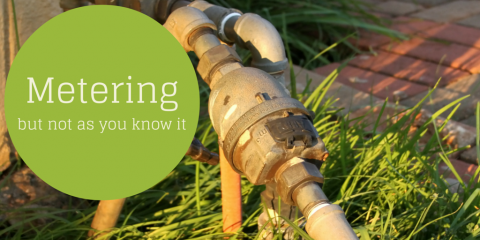
I’ll be the first to admit that a water meter is not the sexiest or interesting of objects. When you have a BBQ conversation about water, talk is either about bills or in times of drought, how much water is in storages. But in terms of billing the most rapidly changing area is the technology used to read the meter. So stay with me - here are a few things you might not know:
- Most water meters last about 10 to 20 years
- There is almost no maintenance and they are reasonably reliable
- The meter is the only control device on domestic properties stopping material flowing back from the property customer to the main water supply
- Monitoring of standard meters is done manually – yes manually - usually every 3 months.
But things are set to change - the next generation of meters allows real time interaction and is likely to change the conversations between water utilities and their customers.
How I hear you ask?
- The meter itself – third generation smart meters don’t just measure water but will allow plug and play integration with almost any type of communications network gear
- Fourth generation meters being developed will contain the power to relate water use to different appliances based on the way water is used by each device
- The communications network - how we get the information from the meter back to a home base that converts the data to a form usable for both the water utility and customers
- Back office software systems, sometimes referred to as ‘big data’. These systems bring together the meter information and allow integration with utility customer service systems and to apps that the customers use.
It’s sounding a bit like your latest phone or tablet!
Of course there will be challenges in this new world:
- Getting the communications right
- Making use of the data to benefit customers
- Developing the business case to change to digital meters - the greatest barrier to implementation. Savings through automation and offsetting the costs of asset upgrades is not always enough. But the most benefit may lie in the benefits for the customer relationship, which are difficult to put a price on.
WSAA and its members have been working on a metering project looking to understand these uncertainties and develop useful information to help guide the industry. But just like our phones and tablets, the pace of change is very high. To address this, for the past two years WSAA has been convening a two day conference to showcase leading practice in Smart Metering. This years’ conference is on the 8 and 9 September and recognises that technology applications are broader than just metering. The Towards the Digital Utility Conference will include case studies on developing smart utilities, integrated networks, communications, big data and the changing nature of the customer relationship that these technologies are bringing about. Some exciting innovations will be showcased at the Conference. Thames Water is one of the more advanced users, who have worked to develop an integrated platform that monitors each meter, sensor and control device within their water network. This integration can then be linked to smart analysis techniques that minimise the costs associated with water pumping and water transfer. The next generation of system analytics is then looking to move the system from providing information back for humans to make decisions to fully automated decision making. Initially this will be subject to review by operators but in the medium to long term we will be looking at full automation of diagnosis and repair.
Just like we all want to know what the latest mobile phone does – we need to know how the latest technologies can be utilised in water.
Further information on the Conference at towardsthedigitalwaterutility.org.
